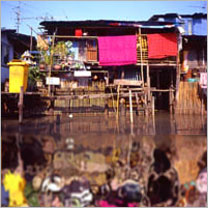 |
Talad Bang Kaen Community Improvement, Pream
Prachakorn canal, Bangkok. Background Praem Prachakorn canal was dug in the period of King Rama V over 100 years ago to connect Bangkok and Ayuthaya. There have been 27 communities located along its 17 km length by UCDO. The canal has expressed in many ways how Bangkok has changed by traveling along the direction of the canal from the centre to the north boarder of the city, it is interesting to observe how communities were located related to the growth of Bangkok city. The communities which mostly poor, can present many fascinating points of how the poor people housed themselves and their capacity in providing all basic services that might be interesting for authorities involved in urban development issues in the area of Klong Praem Prachakorn. |
Objective
To produce an efficient community improvement plan of Klong Praem Prachakorn considering peoples capacity and their existing solutions and resources for housing and its environment. This means also to create and strengthen the communities along the canal and their network in order to implement and succeed the plan.
Methodology
The project will encourage the people to take part in every step of the process as much as possible through the following activities: Surveying/ Collecting information of a community, Community mapping, Community meetings, Action planning workshops.
Outputs
Improvement plans for selected communities. A working plan for project implementation. A stratergy improvement plan for the whole canal at macro level.
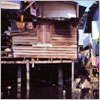 |
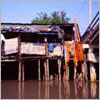 |
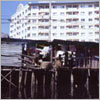 |
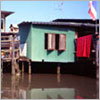 |
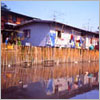 |
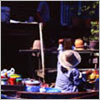 |
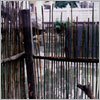 |
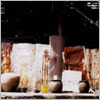 |
intro to land issue?
investigations CASE, UCDO and members from communities surveyed the length of the canal by boat. Observed were a diverse arrangement of shelter perched on banks, different systems of bank edging (dams) arranging from bamboo fencing to broken ribs of boat structure.The majority of households constructed over canal, dug toilets directly into it. It was evident that other polluters were contributing to the degradation of the canal. Black water areas were noticed at the northern stretch of the journey near Talad Tai. Further pollution was seeping into canal from a number of waste pipes and drains from unknown sources.
importance of coalition at Macro level?
Canal Coalition A cross section of representatives from communities along the canal have formed a coalition. CASE introduced themselves to the group as architects interested in learning about the people’s lifestyles along canal. The coalition presented four objectives for improvement. Removal of toilets from canal, build a conduit to separate cooking waste from canal, move houses back from canal, Installation of natural dams along banks.
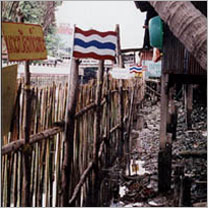 |
Learning from People The Samian Na Ree (Pracha Ruam Jai) community installed bamboo fencing along a cleared canal edge. An agreed easement of 10 metres from bank to bank set the boundary. The intervention allows water to filter through but prevents waste material from houses drifting into canal. The bamboo breaker creates a clean visual edge to the community in a natural material that appears part of the riverbank. The structure also forms a support for river plants to climb upon. Furthermore, the fence is a barrier that prevents access to the open house facades from canal intruders. The intervention is an aspiration by communities within canal coalition. An exchange of experience in bamboo fence installation can be transferred between communities. |
Macro to Micro
The shear length of the canal and the diverse nature of communities living along it, has shown that an overall strategy for canal improvement as a complex and difficult task.
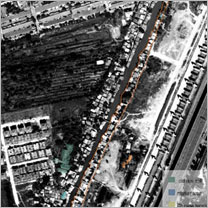 |
Each community visited has different needs resulting from a contrast in economic status, typology conditions, existing services and infrastructure, conflicting political interests and moreover polarities in the strength of communities. Building individual community to join the coalition and the forging of relationships between the stakeholders along the canal will take incremental steps. Furthermore the changing character of the canal has a mutating relationship with the city. The stakeholders cut across the city through municipality, private sector and community. Linking all stakeholders into ‘stakeholder participation’ is a long-term objective. The creation of new partnerships started with focusing on building relationships between CASE and individual communties. | 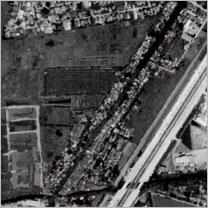 |
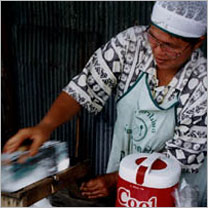 |
Building Relationships in Talad Bang Khean The community is one of the oldest along the canal. We had a conversation with an 89-year-old woman, born in TBK and has witnessed the change from a vibrant rice producing community to its present cycle of a struggling urban poor community. There are buildings of historical interest within TBK that record a memory of its past. These include two old rice mills, two Chinese temples and an old market area. A theatre mask-maker resides in the community, the enterprise is supported by a heritage section from the District Office and also a school within the district, to help preserve the craft. The skill is taught in classes held at the community, where a number of local children partake. Further visits have revealed a site of a former chinese theatre, now converted into a house, the site of an opium smoking room and a number of houses constructed over 80 years ago. |
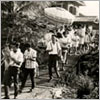 |
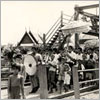 |
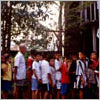 |
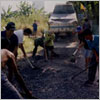 |
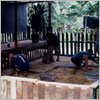 |
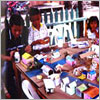 |
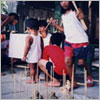 |
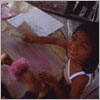 |
Exibition as Catalyst
There was a sense of pride expressed in the heritage of the community and an interest to show the memory of the past to others. In discussions with community it was suggested an exhibition could be a tool by which to display a retrospect of past community lifestyles. The creation of a string of events ranging from music, to a display of local craft skills and the communities ideas in how to present their community to the public brings the exhibition into a look of present lifestyles. An invitation to other communities along the canal, District Office representatives, academics and students, Department of Fine Art, and members of the general public interested in a retrospect of past to present lifestyles on a Bangkok Klong. Inviting a cross-section of the city gives the opportunity to generate a diverse forum of discussion. We copied old photographs and recorded stories in the event of displaying a retrospect of past community lifestyles. The project developed into a tool in how to understand the community and find their goals and aspirations. Furthermore, the process to exibition helped to; encourage community to take part in the exibition, attract all stakeholders, create a forum to nuture partnerships. The exhibition was also an initiative to get more supporters from middle classes, teachers, district officers, lead to an open forum/seminar, discussing the present issues of people living along canal. Strengthen community to start pilot projects, road improvement, community market roof repair.
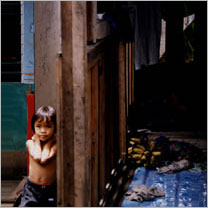 |
Getting Started Commencement of children’s workshop started to produce community work to be exhibited to public, this included childrens photograhs of exisitng, areas they liked within community, that led to the construction of a scaled down model of the community. Children’s’ enthusiasm in workshops, attracted their parents and other adults from the community. Children presented their work from the workshops to their parents, where discussions were created. The children were an effective target group to kick start the energy and resource of the older members of TBK. CASE recorded the weekly development of ‘community building’ through the workshops. The process of ‘community building’ was also to be exhibited. At the end of each workshop there was enough material for a small exhibition. The living exhibition process threads the small exhibitions into a larger exhibition, ready for public forum. Exhibition was a process to build community interest in TBK together, a starting point for the community to act as a group in collective decsion making and finding common interest. |